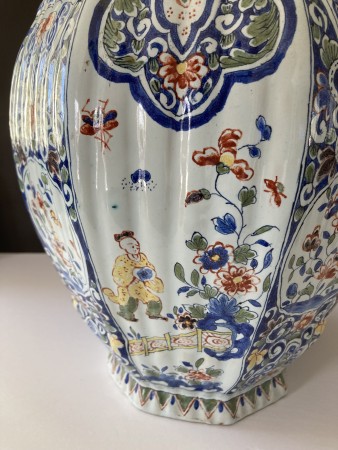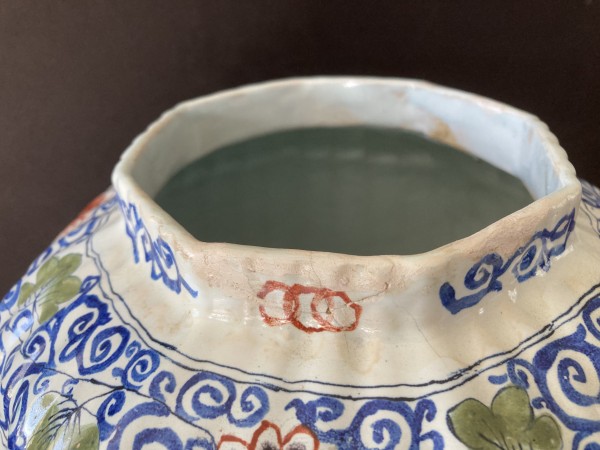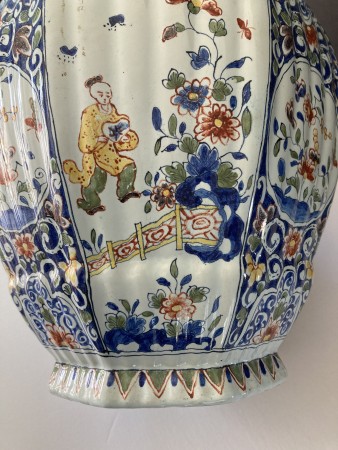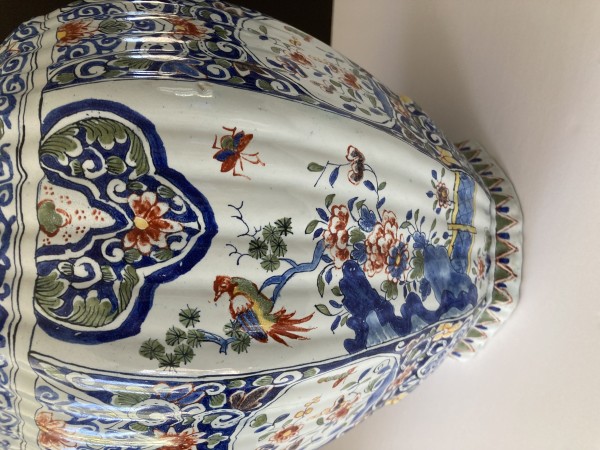This vase is a good example made around 1700, the mark has been attributed in the past to Johannes Knotter, a businessman, who owned De Porceleyne Fles factory from 1697 to 1701
Vraag
Which and where auction house do you recommend to sell this vase? Thank you!
Afmetingen
Height 17 inch; Width 9 inch; Depth 9 inch
Collectie
publiekscollectie




















Reacties 3
Hello,
I am afraid your vase has a non-existent mark. Please see: https://delftsaardewerk.nl/ontdekken/merkenindex for an extensive list of original Delft marks. Next to nothing is known about the marks on pieces of Porceleyne Fles from the early years of the 18th century (page 231: Royal Delft, A Guide to the Porceleyne Fles by Rick Erickson). So it would be extremely rare to come across an original work by Johannes Knotter. Your vase also doesn’t have the age related wear which you would expect on an early 18th century piece. I think you have an early 20th century (French?) copy. Probably not the news you’d like to hear but please don’t sell it as original Delftware. For your reference, Knotter’s mark might have looked like this:
Kind regards, Patrick
I agree with Patrick. Also on the website of Royal Delft you can find the marks of Johannes Knotter.
Some brands were frequently copied (read forged), mostly from (Northern) France in an attempt to sell them as genuine. Given the short period that Knotter was able to make the Porceleyne Fles more widely known, there are only few pieces that can be attributed to him with certainty, as many pieces were not marked at that time (as Patrick indicated).
Unfortunately, there are still antiquairs today who offer such pieces as "authentic".
kind regards Franky
Verdict:
Analysis:
Unfortunately, this vase with a cover wasn't made in Delft. It is most likely a 20th-century (French) copy. The mark appears occasionally, such as on these vases: link. In this example, the mark is more distinctly 'iK' than on your vase, but it is certainly not Jacobus Knotter either.
Add new comment
Only logged in users can post comments
Log in or register to post comments